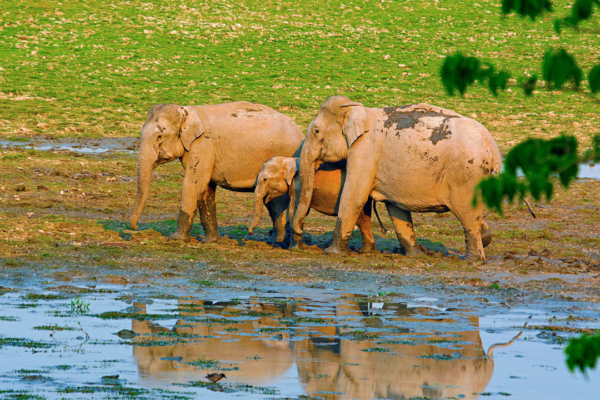Spiti Valley is a cold desert mountain valley located high in the Himalayas in the north-eastern part of the northern Indian state of Himachal Pradesh. The name “Spiti” means “The middle land”, i.e. the land between Tibet and India. Spiti Valley is one of the most biodiverse and productive ecosystems in the world, hosting thousands of species of plants and animals, including many endangered ones. Among the most charismatic and elusive creatures that inhabit the Spiti Valley is the snow leopard, a medium-sized spotted cat that is also known as the dwarf leopard.
What are snow leopards?
Snow leopards (Panthera uncia) are semi-aquatic mammals that belong to the family Felidae, which also includes lions, tigers, leopards, and jaguars. They are the smallest of the big cats, weighing between 27 and 55 kg and measuring between 86 and 125 cm in body length, with a tail of 80 to 105 cm. They have a thick fur coat that is grey or creamy-yellow, with black spots and rosettes. They have a round head, large eyes, small ears, and a short muzzle. They have long and powerful legs, with large and furry paws that act as snowshoes. They have a long and thick tail that helps them balance on rocky terrain and also keeps them warm when wrapped around their body.
Snow leopards are solitary and secretive animals, except during mating season or when raising cubs. They have a wide range across Central and South Asia, from Afghanistan to Mongolia, but they prefer habitats with high altitudes, steep slopes, rocky outcrops, and sparse vegetation. They are mostly active at dawn and dusk, hunting for prey such as blue sheep, ibex, marmots, hares, and birds. They use their excellent vision and hearing to locate their prey, and then stalk and pounce on them with great agility and speed. They can leap up to 15 meters in a single bound and can kill prey up to three times their weight.
Snow leopards breed between January and March when they make loud calls to attract mates. The gestation period lasts for about 98 to 103 days, after which the female gives birth to one to five cubs in a den lined with fur. The cubs are born blind and helpless and depend on their mother’s milk for the first two months. They open their eyes after seven days and start exploring their surroundings after two weeks. They stay with their mother for up to two years, learning how to hunt and survive on their own.

How do snow leopards adapt to their environment?
Snow leopards have various adaptations to survive in their cold and harsh habitat. Some of these adaptations are:
- Fur: Snow leopards have a thick fur coat that insulates them from the cold and protects them from wind and snow. Their fur is also camouflaged with their surroundings, making them hard to spot predators or prey. Their fur colour changes with the seasons, becoming lighter in winter and darker in summer.
- Paws: Snow leopards have large and furry paws that act as snowshoes, distributing their weight evenly on the snow and preventing them from sinking. Their paws also have sharp claws that help them grip slippery surfaces and catch their prey.
- Tail: Snow leopards have a long and thick tail that helps them balance on rocky terrain and also keeps them warm when wrapped around their body. Their tail also acts as a rudder when they leap or turn in mid-air.
- Respiratory system: Snow leopards have a well-developed respiratory system that allows them to breathe in the thin air of high altitudes. They have large lungs and nasal cavities that increase the oxygen intake and warm up the cold air before it reaches their lungs.
- Behaviour: Snow leopards have behaviour that helps them cope with their environment. They are mostly active at dawn and dusk when the temperature is moderate and the visibility is low. They rest during the day in caves or crevices to conserve energy and avoid heat loss. They also migrate seasonally to follow their prey or find suitable habitats.

Why are snow leopards important for Spiti Valley?
Snow leopards are not only beautiful and fascinating animals, but also important indicators of the health and diversity of the Spiti Valley ecosystem. They play a vital role in maintaining the balance of the food chain by controlling the population of herbivores and other small animals. They also help in dispersing seeds and nutrients through their faeces and urine.
Snow leopards are also important for the conservation of other endangered species in Spiti Valley, such as Himalayan brown bears, red foxes, and Tibetan wolves. They share their habitat with these animals and provide them with prey, shelter, or companionship. They also act as sentinels or alarm systems for these animals by alerting them of the presence of poachers or intruders through their loud calls.
Snow leopards are also important for the culture and livelihood of the local people in Spiti Valley, such as the Bhoti and the Spiti. They are revered as sacred animals by the Buddhist communities, who believe that they are guardians of the mountains and the spirits of their ancestors. They are also valued as a source of income by ecotourism operators, who offer wildlife safaris and treks to see these elusive cats.

Snow leopards are one of the most amazing and adorable animals that you can see in Spiti Valley. They are not only a delight to watch, but also a vital part of the Spiti Valley ecosystem. They are also a symbol of the conservation and awareness of the wildlife in Spiti Valley. By joining the Snow Leopard Spiti Expedition, you can learn more about these snow leopard adaptations and their survival strategies and appreciate their contribution to the rich heritage of India.





